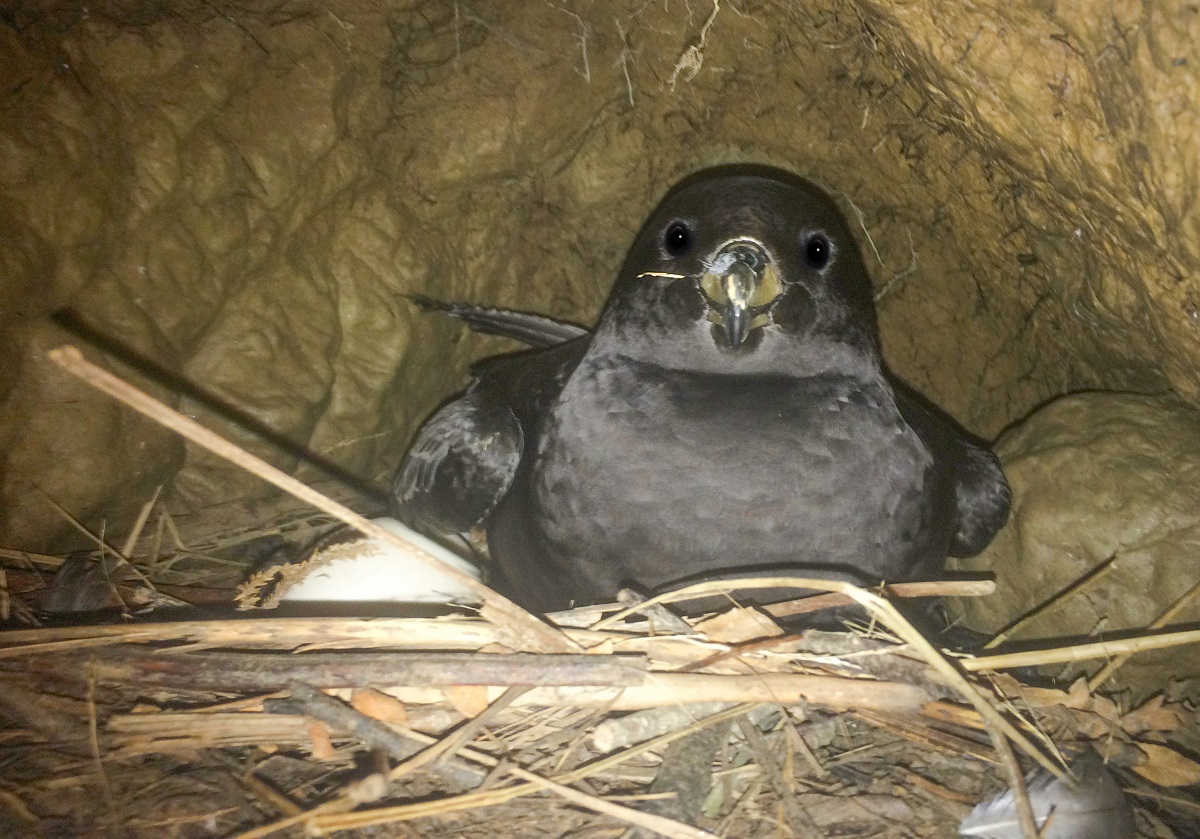
A burrow-nesting Westland Petrel beside its egg; photograph by Reuben Lane
David Hawke (Ara Institute of Canterbury, Christchurch, New Zealand) has published an article in the New Zealand of Ecology that reviews how breeding Westland Petrels Procellaria westlandica affect biogeochemical processes at their breeding sites.
The paper’s abstract follows:
The Westland petrel (Procellaria westlandica) is a 1200 g medium-sized seabird whose breeding colonies are dispersed across 700 ha of forest on the western coast of South Island, New Zealand. These birds represent the sole landscape-scale lowland remnant of formerly widespread petrel and shearwater colonies in mainland New Zealand and provide an opportunity to investigate maritime species’ impact on terrestrial ecosystems characteristic of pre-human New Zealand. This review develops a conceptual model of biogeochemical processes influenced by Westland petrels from a single burrow to individual colonies and thence to a catchment scale. Results show the distinctiveness of the Westland petrel system, with colonies moving around the landscape in response to local damage by earthquakes and storms. Based on monitored streams in forested landscapes elsewhere, storms also control N and P fluxes to streams. Non-seabird temperate forests are dominated by mycorrhizal plant-soil interactions, but the high N and P status of Westland petrel colony soils minimises the role of fungi in soil processes, including trace element (Se) uptake. The more N-rich C:N ratio in tree foliage within habitat occupied by the colony may provide nutritional support for terrestrial herbivorous animals, including those whose ranges extend beyond the colony. Overall, the review emphasises the spatial and temporal dynamics of the Westland petrel terrestrial ecosystem, and highlights potential ecological linkages that connect colonies to the wider landscape.
Reference:
Hawke, D. 2022. The biogeochemistry and ecological impact of Westland petrels (Procellaria westlandica) on terrestrial ecosystems. New Zealand Journal of Ecology 46(1): 3455.
John Cooper, ACAP Information Officer, 29 December 2021

 Español
Español  English
English  Français
Français